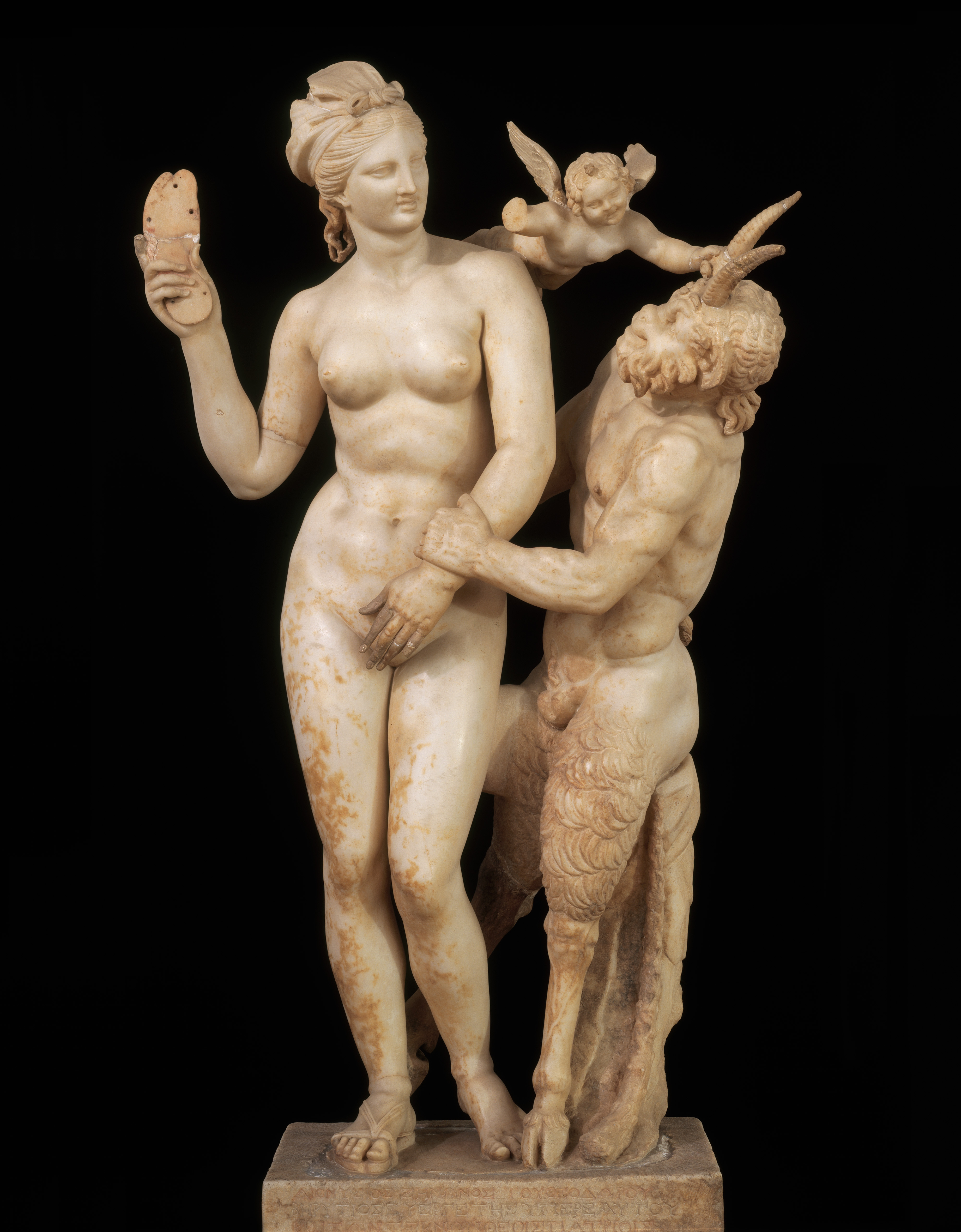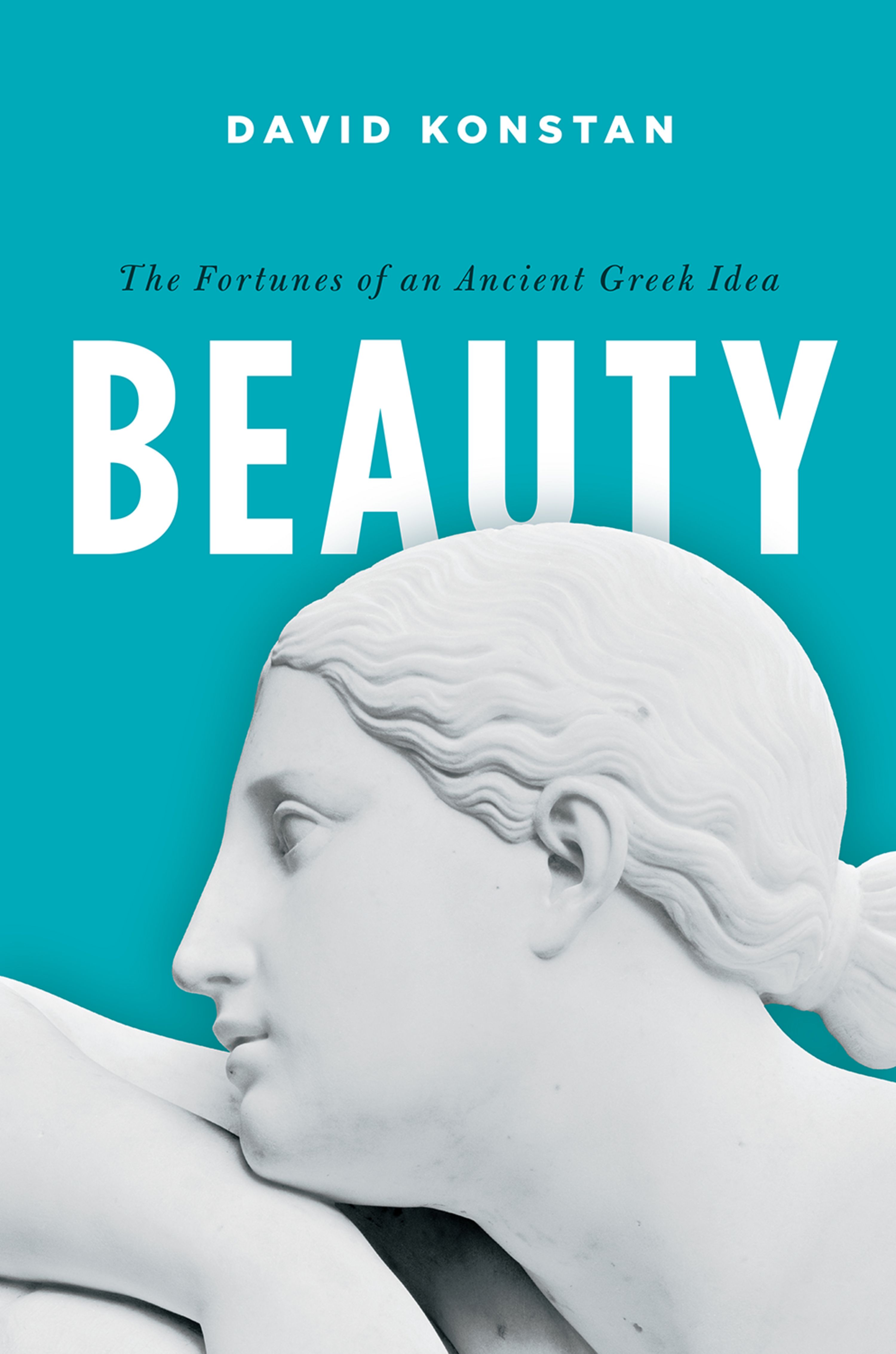By David Konstan (Regular Contributor)

Aphrodite’s beauty attracts the erotic gaze of Pan. National Archaeological Museum, Athens, Greece. Credit: Marie Mauzy / Art Resource, NY.
The English word “beautiful” is very broad: it may refer to an attractive woman or, somewhat less frequently, an attractive man, but it is also a fundamental concept in aesthetics, used of artworks of every sort. We speak of landscapes and flowers and sunsets as beautiful, and even more abstract items such as ideas or mathematical proofs, and also of spiritual qualities, often in religious contexts and opposed to carnal beauty (think of the beauty of the Virgin Mary). But does “beauty” or “beautiful” mean the same thing in these various uses? What does the sex appeal of an actress have to do with the ethereal beauty of a saint? Is a brilliantly executed work of art beautiful, even if it represents objects that in themselves appear ugly or distasteful?
Did ancient Greeks face the same questions about beauty as we do today? It turns out that they did not, or not in these terms. This question is challenging because the Greek vocabulary does not seem to have a proper word for beauty at all. Rather, the term that scholars have examined meant something like “fine” or “noble,” and could be used so generally that it eclipsed even the modern breadth of the word “beauty.” Indeed, some people (among them Umberto Eco) have concluded that the Greeks did not seem to have a concept of beauty at all.
Beauty As a Product of Sexual Desire
Well, there was a word that did come closer, kállos, and curiously it had been all but ignored and never treated as a concept on its own. An analysis of its uses indicates that the Greeks thought of beauty, or what they called beauty, as closely connected to the visual, and to sexual allure in particular; that is why it was more likely to be ascribed to women and boys – the objects of erotic desire in the classical Greek way of thinking – than to adult males. Even women were imagined as preferring boyish looks over macho musclemen: they were more likely to lust after a pale, un-athletic adolescent than a he-man like Hercules.
True, the Greeks could speak of works art, and even of virtues, as possessing beauty, but even in these extended uses the term never lost its association with attractive proportions, on the model of the human figure. Beauty implied desire, even when the object was as transcendental as God. The modern notion of disinterested contemplation was foreign to the classical Greek conception of aesthetics, and so the conundrums mentioned at the beginning of this post never seem to have worried them.
This understanding of Greek beauty begs the question: does classical Latin present the same configuration? To make this comparison we must turn, in part, to the Bible, which is the fullest literary text we have in parallel Greek and Latin versions, as well as Hebrew. The findings are surprising, for it turns out that the Hebrew vocabulary for beauty matches up very well with the Greek. The Latin term has proved somewhat different, despite the powerful influence of Greek thought on Roman ideas. It is this transition of Greek ideas into the Latin West that explains how Western ideals of beauty have shifted over time.
For further reflections on how and why ancient Greek conceptions of beauty gave way to the more problematic status of beauty in modern aesthetics, take a look at my new book: Beauty: The Fortunes of an Ancient Greek Idea. It’s an interesting story.
 David Konstan is the author of Beauty: The Fortunes of an Ancient Greek Idea (Oxford University Press). He is Professor of Classics at New York University and Emeritus Professor of Classics at Brown University. His previous books include Before Forgiveness, The Emotions of the Ancient Greeks, and Friendship in the Classical World.
David Konstan is the author of Beauty: The Fortunes of an Ancient Greek Idea (Oxford University Press). He is Professor of Classics at New York University and Emeritus Professor of Classics at Brown University. His previous books include Before Forgiveness, The Emotions of the Ancient Greeks, and Friendship in the Classical World.
